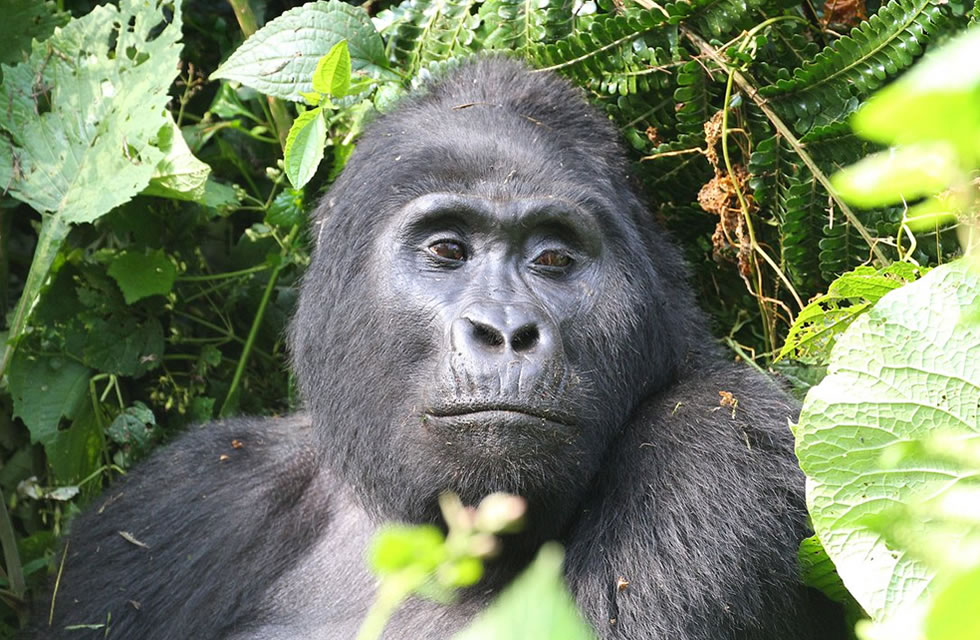As part of your ecotourism experience, Gorilla tracking is a very captivating activity; it involves walking in the wilderness in search of these great apes.
Most parts of Uganda have remained unchanged for over a period of a century. The instabilities of the early eighties resulted into stunted growth of all industries especially tourism which is super-sensitive when it comes to developing tourism. However the situation has been changed in the last 15 years. Local and international funding is picking up.
Government is slowly but surely reversing the damage inflicted on the wildlife population by re-establishing control and management. Much has been progress has been registered in the development of infrastructure and security in the National Parks. New non-traditional attractions such as sport fishing, Mountain Gorilla tracking, ecotourism, whitewater rafting, kayaking, Bungy jumping and quad-bike safaris. The above have put Uganda back on the tourist circuit.
Ecotourism: An experience to remember at Bwindi Impenetrable National Park
Located in southwest Uganda, part of the last remaining natural stand of forest in East Africa. The renowned Bwindi Forest supports a large number of flora, fauna endemic in this region; the major being half of the worlds population of Mountain Gorillas. Close up to 450 mountain gorillas in number live in the impenetrable forest. These great apes live in groups. The mountain gorilla population is split between Rwanda, Uganda and the Democratic Republic of Congo (DRC). Their habitat is being encroached by farming and increased human population. These great apes are not called mountain gorillas for nothing; they live high in the slopes of the gorillas. The rugged terrain makes hiking/tracking in search of the gorillas strenuous work. The hilly uphill experience is worth every drop of sweat and dollar when you finally track them down.
Within Bwindi, there are 18 habituated gorilla families that can be visited by tourists. Groups of eight visitors are allowed to visit a habituated gorilla family per day and visitors are allowed to stay with the gorillas for only one hour. How time flies by! Keep eight to five meters distance as per the gorilla watching rules. However the gorillas do have their rules! They might come inquisitive especially the juveniles and may break the rule.
A good camera is handy here, but please no flash photography or you might upset the party! Remember you are not in the zoo, you are the intruder! Looking for tale-tale signs like broken twigs, pressed-down grass, dung around gorilla nests, the guides/trackers follow in their wake until you catch up with the family. While you are tracking the mountain gorillas, there are plenty to see in the Bwindi Forest, Chimpanzees, 346 species of birds, 202 species of butterflies, and 163 species of trees packed into one of the richest ecosystems in Africa.
Is Gorilla Tourism Sustainable?
It was decided to limit the number of people allowed to track these vulnerable primates so that to safeguard the habitat from human activities that can be disastrous. These rules are a balancing act between the short term benefits and the long term benefits and the long term protection of the gorillas. If the visitors are not regulated and large groups are allowed, there could be an increased risk of degradation and contamination of the environment in which the gorillas live.
Unrestricted tracking can lead to spread of disease from humans to the gorillas and vice versa. Remember most of the communicable diseases that humans catch, can spread to the mountain gorillas.
Gorilla tracking is a worthwhile adventure, as part of the proceeds goes into the work of ensuring that the gorillas survive for posterity to enjoy. Many projects concerning ecotourism in Uganda have sprung up around this ecosystem to sensitize the communities about the importance conservation measures concerning the gorillas and other endangered wildlife.
Conclusion
The remnant of the once huge rain forest which covered a large area of Africa in eons past; Bwindi Forest straddles the precipitous ridges of the Rift Valley. It is home to almost half of the remnant population of the mountain gorillas left in the whole world. Mountain forests are the last places to be encroached by the cultivating humans, consequently, the gorillas are constantly pressured into the mountains, and it is not their choice.
Unfortunately Bwindi also lies in one of the densely populated areas in Africa. Finally the forests upon the mountains have become a sanctuary of diverse species of fauna and flora. As its name implies, Bwindi Impenetrable Forest is not easily accessible, with thick undergrowth, giant buttressed trees entangled in hand-thick lianas, Gorillas find it a perfect haven as well as birds which are present all the year round.

Leave a Reply